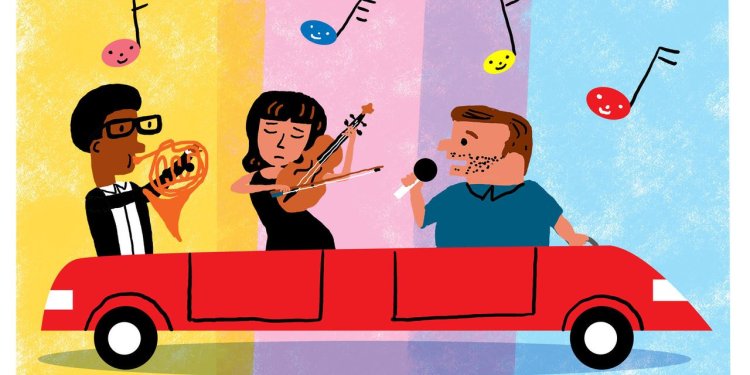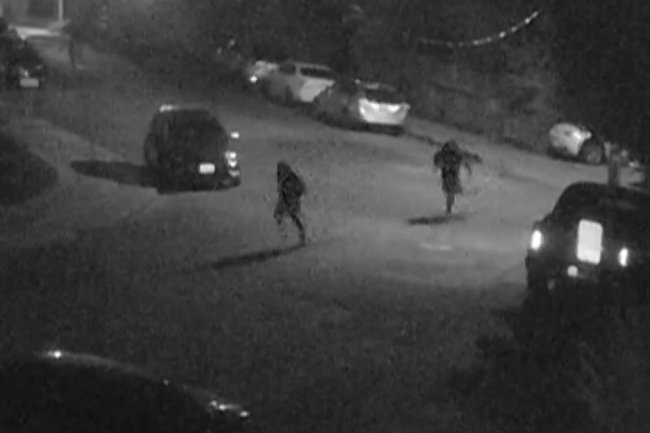‘Karaoke’: From an Orchestral Backing Track to a Star Turn
By Ben Zimmer April 27, 2023 4:25 pm ET Linguist and lexicographer Ben Zimmer analyzes the origins of words in the news. Read previous columns here. This week marks the end of James Corden’s eight-year run as the host of ’s “The Late Late Show.” One of the show’s most popular features has been the recurring segment “Carpool Karaoke,” wherein Mr. Corden invites famous musical guests to sing along to their own songs while giving them a lift in his car. On the final “Carpool Karaoke,” broadcast as part of a prime-time special tonight before the show’s final episode, British megastar Adele

By
Linguist and lexicographer Ben Zimmer analyzes the origins of words in the news. Read previous columns here.
This week marks the end of James Corden’s eight-year run as the host of ’s “The Late Late Show.” One of the show’s most popular features has been the recurring segment “Carpool Karaoke,” wherein Mr. Corden invites famous musical guests to sing along to their own songs while giving them a lift in his car. On the final “Carpool Karaoke,” broadcast as part of a prime-time special tonight before the show’s final episode, British megastar Adele turns the tables on her friend Mr. Corden, giving him a ride to work instead.
The sing-along/ride-along format of “Carpool Karaoke” shows just how flexible the word “karaoke” has been since first emerging as a name for a kind of Japanese interactive entertainment more than half a century ago. And the word’s history reflects a fascinating cultural interplay between Japan and the West, as well as the interlacing of music and technology.
The term “karaoke” is itself a Japanese-English hybrid. It’s an example of what is called “gairaigo” in Japanese, when a word borrowed from English or another foreign language is incorporated into a Japanese word. Sometimes those loaned words then get borrowed back into English—for example, “anime” (from “animation”) or “cosplay” (from “costume play”).
“By 1979, karaoke machines and tapes found their way to Honolulu, and in 1982 a Burbank, Calif. restaurant billed itself as ‘America’s first karaoke bar.’”
The first part of “karaoke,” “kara,” means “empty” in Japanese. It also serves as a root for “karate,” as the name of the art of self-defense literally means “empty hand.” The second part, “oke,” is a shortened form of the English word “orchestra,” or “ōkesutora,” as it became transformed when entering the Japanese lexicon.
In 1967, the Tokyo-based engineer Shigeichi Negishi made the first prototype of a karaoke machine, a coin-operated box that used 8-track cassette tapes to play instrumental recordings that people could sing along to. As described in Matt Alt’s 2021 book “Pure Invention: How Japan Made the Modern World,” when Mr. Negishi was looking for more instrumentals, a fellow engineer told him, “Karaoke. You want karaoke tapes.”
“Karaoke” was already a music industry term for instrumental tapes used when it would be too difficult to record a singer accompanied by a full orchestra. “So they’d perform with a taped backing track instead—with the orchestra pit ‘empty.’ That’s what ‘karaoke’ means,” Mr. Negishi recalled.
While Mr. Negishi’s prototype did not catch on commercially, a similar contraption invented in 1971 by Daisuke Inoue, a nightclub musician from the city of Kobe, saw more success. His karaoke machine, known as “8 Juke” (also relying on 8-track tapes), became a popular feature of Kobe nightlife. But Mr. Inoue, like Mr. Negishi, did not patent his invention, opening the way for various Japanese electronics manufacturers to make their own karaoke machines.
The first known use of “karaoke” in English, according to the Oxford English Dictionary, appeared in a 1977 article in the Japan Times, which reported, “Businessmen taking their cue from the Japanese predilection to break into song after having a few drinks have built up a booming trade in ‘karaoke’ musical backup tape sets.” Soon, karaoke became a worldwide phenomenon. By 1979, karaoke machines and tapes had found their way to Honolulu, and in 1982 a restaurant and bar called Dimples opened in Burbank, Calif., billing itself as “America’s first karaoke bar.”
The karaoke boom took off in the 1980s and ’90s as cassette tapes gave way to CDs, laserdiscs and DVDs, with lyrics displayed on a video screen. Meanwhile, the word “karaoke” has spawned numerous spinoffs, often mimicking the “-oke” ending.
“Movieoke” lets people act along to movie scenes, while “aireoke” involves playing air guitar to prerecorded music. In the Philippines, karaoke often goes by the name “videoke,” and karaoke performed with a live band has been called “bandeoke” or “rockeoke.” And for those who want to re-create the “Carpool Karaoke” experience, newer models of Tesla cars have just the thing: an infotainment feature called Caraoke.
What's Your Reaction?













